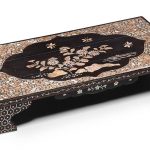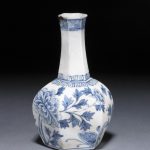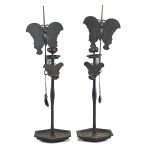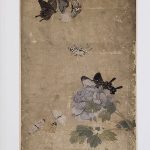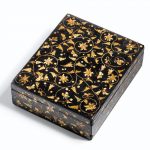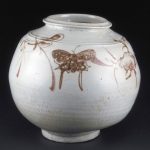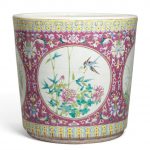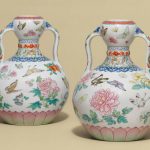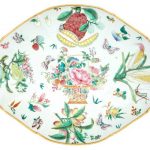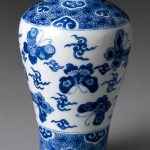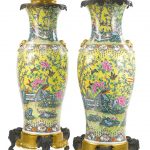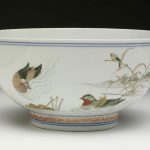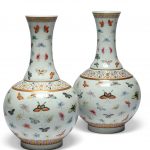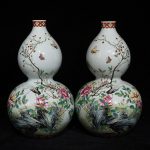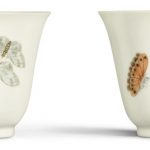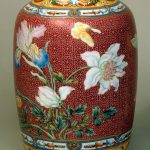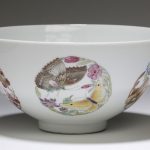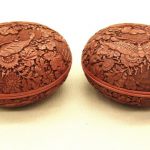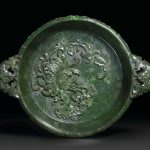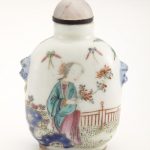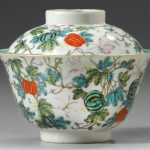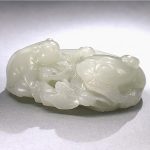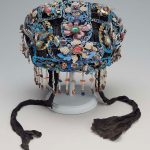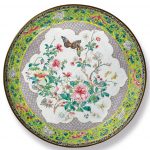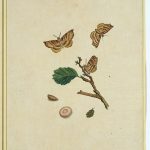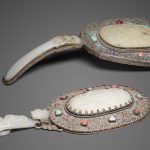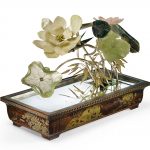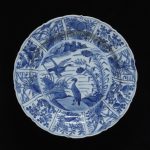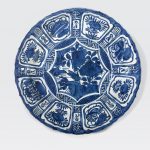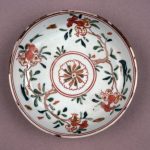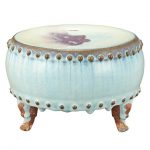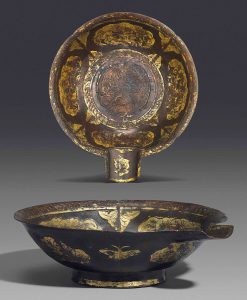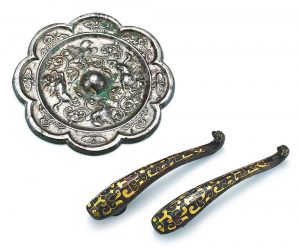The post Chinese Blue and White Porcelain appeared first on Antique Butterflies.
]]>Below are some examples and price guides of antique Chinese blue and white porcelain including a Kangxi pot and a fine porcelain snuff bottle.
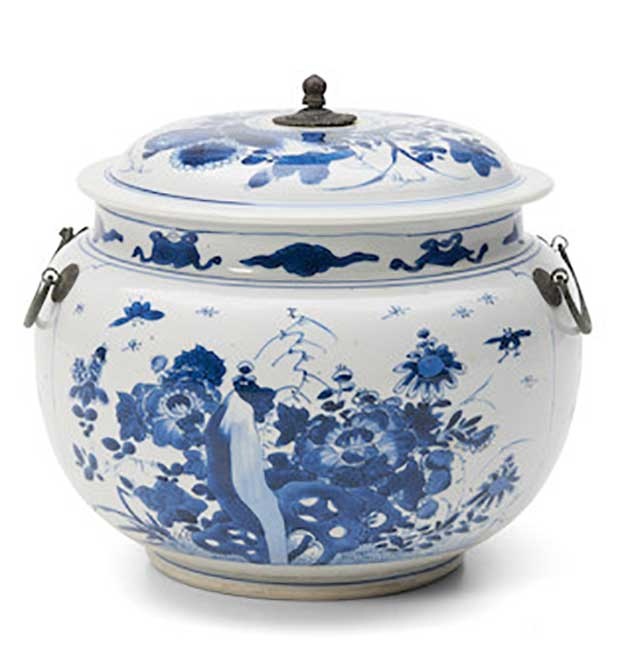
Chinese Blue and White Kangxi Pot and Cover,
1662-1722,
squat bulbous shape with metal handles and finial, underglaze decorated with a mountainous landscape with figures on one side, the reverse with a flower garden with insects, approx. overall dia. 8 3/4, ht. 8 1/4 in.
Sold for Sold for US$6,400 inc. premium at Bonham’s in 2023
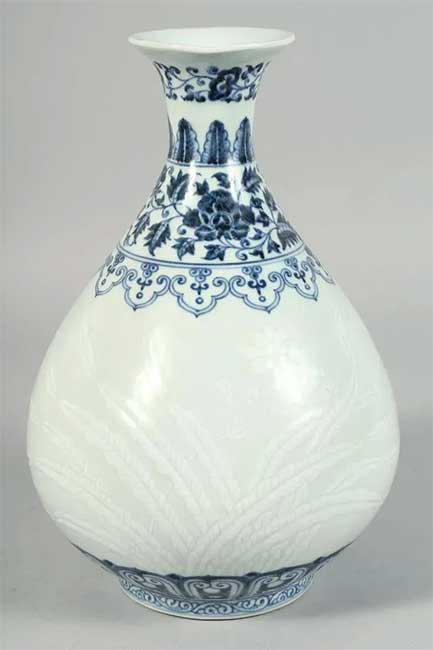
CHINESE BLUE AND WHITE PORCELAIN YUHUCHUNPIN VASE, the body with raised decoration depicting sprays of flora and butterflies, the neck with a band of blue and white foliate decoration, six-character mark to base, 30cm high.
Sold for US$300 at Royal Sea LLC in 2023
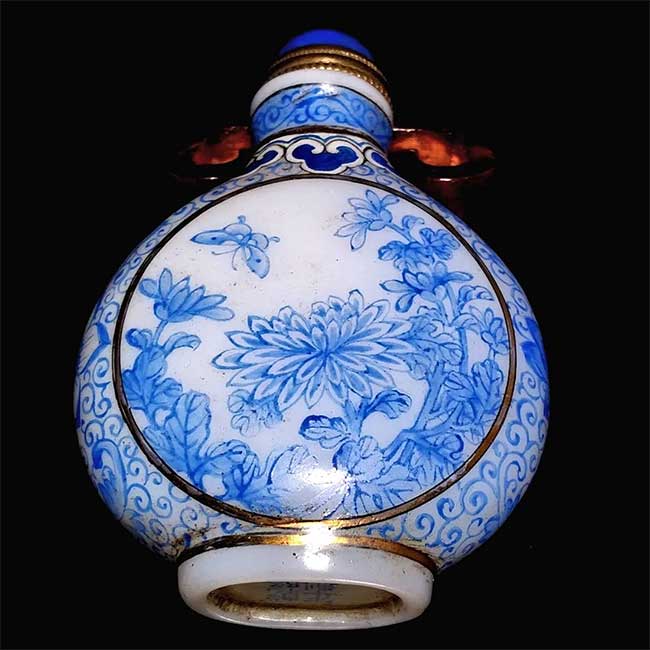
FINE CHINESE BLUE WHITE ENAMEL SNUFF BOTTLE POEM QIANLONG MARK
This blue and white bottle is finely enameled and features a floral scene with a butterfly on one side and a poem on the other. There are also fine gilding touches. It bears the Qianlong mark and is 2.8 inches tall.
Sold for US$120 at Noble House Collection Gallery in 2023
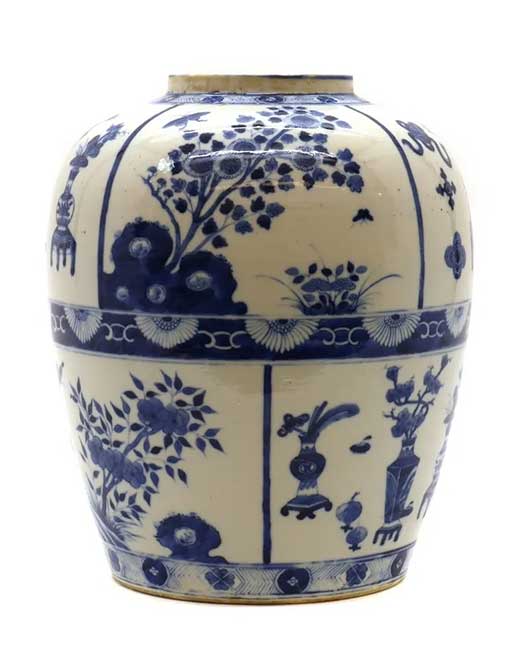
A Chinese blue and white jar, Kangxi (1662-1722), of ovoid form, painted with precious objects, butterflies and flowers in shaped panels, 26cm high Condition Report: Signs of glue to rim.
Sold for £820 at Sworders Fine Art Auctioneers in 2023
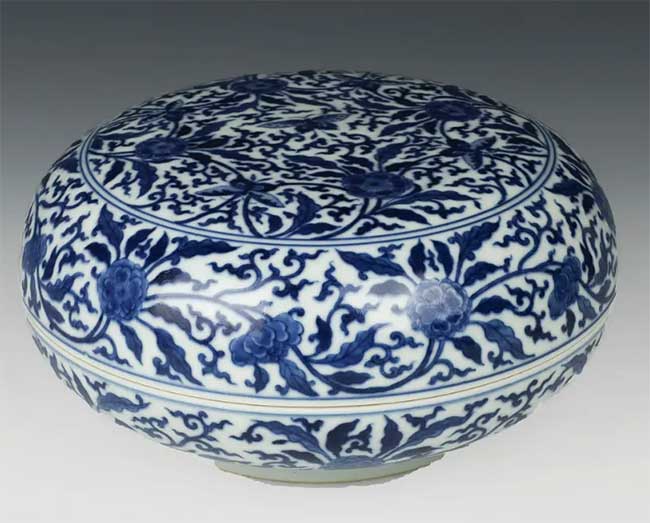
Blue And White Butterfly Pattern Holding Box, Kangxi Mark
Sold for CA$250 at Arnaud’s Auctions and Appraisals LIMITED in 2023
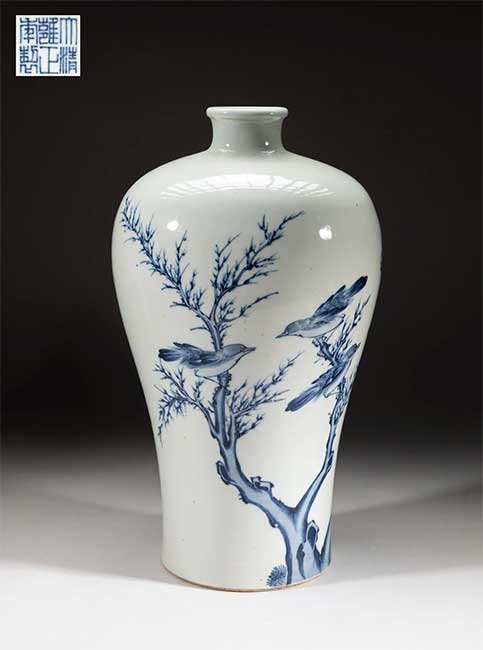
Rare Chinese Blue & White Porcelain Vase
Of tall baluster form, the exterior painted with birds, butterflies and gnarled tree branches, the bottom inscribed with six-character mark. Approx. 12.4-7 inch.
Sold for US$3,250 at Wealthier Art & Auction in 2023
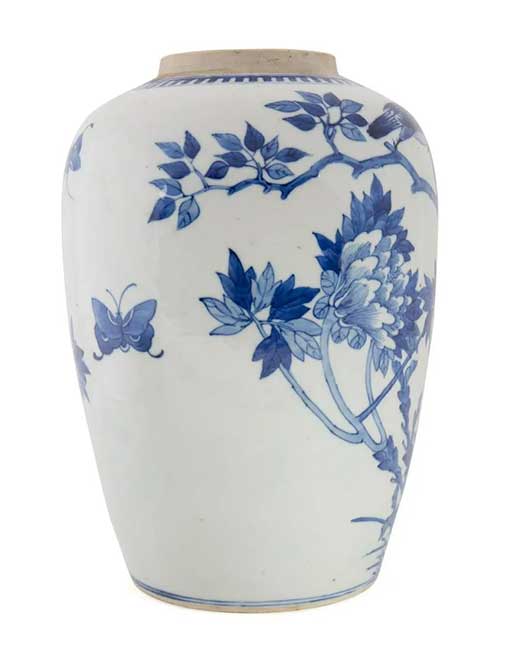
Chinese blue and white bird and flower jar, of ovoid form, decorated with a pair of bulbuls perched in a peony bush with rockwork to the side and butterflies floating above, having no apparent mark.
Approximate dimensions: h. 11″, dia. 7″.
Sold for US$450 at Ahlers & Ogletree Auction Gallery in 2023
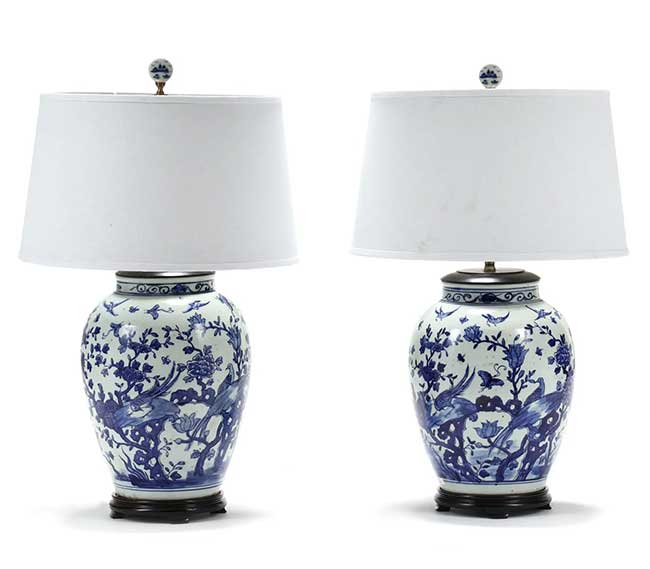
A Pair of Large Chinese Porcelain Blue and White Table Lamps
contemporary, large ginger jars painted with birds, flowers and butterflies in blue, drilled and set into wood mounts as lamps with single lightbulb fixture, fabric lampshades, and decorative porcelain disc finials with blue landscape scene, label stickers remain to body of lamps.
Sold for US$375 at Leland Little in 2023
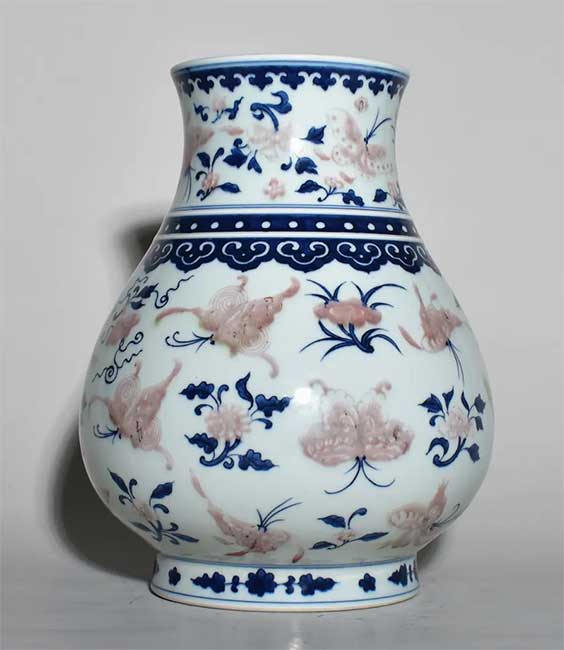
Blue and white vase with butterfly pattern of the Qing Dynasty
Sold for US$3,750 at YaShawn Auction House in 2023
The post Chinese Blue and White Porcelain appeared first on Antique Butterflies.
]]>The post Joseon / Choson Dynasty appeared first on Antique Butterflies.
]]>The Mid-Joseon dynasty painting styles moved towards increased realism. A national painting style of landscapes called “true view” began – moving from the traditional Chinese style of idealized general landscapes to particular locations exactly rendered. While not photographic, the style was academic enough to become established and supported as a standardized style in Korean painting. At this time China ceased to have pre-eminent influence, Korean art took its own course, and became increasingly distinctive to the traditional Chinese painting.
Ceramics are a form of popular art during the Joseon Dynasty. Examples of ceramics include white porcelain or white porcelain decorated with cobalt, copper red underglaze, blue underglaze and iron underglaze. Ceramics from the Joseon period differ from other periods because artists felt that each piece of art deserved its own uniquely cultivated personality. Reference: Wikipedia
The post Joseon / Choson Dynasty appeared first on Antique Butterflies.
]]>The post Chinese Porcelain appeared first on Antique Butterflies.
]]>Eventually, porcelain and the expertise required to create it began to spread into other areas of East Asia. During the Song dynasty (960–1279 AD), artistry and production had reached new heights. The manufacture of porcelain became highly organised, and the dragon kilns excavated from this period could fire as many as 25,000 pieces at a time, and over 100,000 by the end of the period. While Xing ware is regarded as among the greatest of the Tang dynasty porcelain, Ding ware became the premier porcelain of the Song dynasty.
By the time of the Ming dynasty (1368–1644 AD), porcelain wares were being exported to Europe. Some of the most well-known Chinese porcelain art styles arrived in Europe during this era, such as the coveted “blue-and-white” wares. The Ming dynasty controlled much of the porcelain trade, which was expanded to Asia, Africa and Europe via the Silk Road. In 1517, Portuguese merchants began direct trade by sea with the Ming dynasty, and in 1598, Dutch merchants followed.
Some porcelains were more highly valued than others in imperial China. The most valued types can be identified by their association with the court, either as tribute offerings, or as products of kilns under imperial supervision. Since the Yuan dynasty, the largest and best centre of production has made Jingdezhen porcelain. During the Ming dynasty, Jingdezhen porcelain become a source of imperial pride. The Yongle emperor erected a white porcelain brick-faced pagoda at Nanjing, and an exceptionally smoothly glazed type of white porcelain is peculiar to his reign. Jingdezhen porcelain’s fame came to a peak during the Qing dynasty. Reference: Wikipedia
The post Chinese Porcelain appeared first on Antique Butterflies.
]]>The post Famille Rose appeared first on Antique Butterflies.
]]>Below are some examples, information and price guides to famille rose antiques which include butterflies in their design, including a pair of butterfly bottle vases and a pair of butterfly cups.
The post Famille Rose appeared first on Antique Butterflies.
]]>The post Qianlong Reign appeared first on Antique Butterflies.
]]>Below are some examples of antiques depicting butterflies from the Qianlong period including two carved lacquer boxes and a butterfly and melon bowl.
The post Qianlong Reign appeared first on Antique Butterflies.
]]>The post Qing Dynasty appeared first on Antique Butterflies.
]]>Below are some examples, information and price guides to antiques depicting butterflies from the Qing dynasty, including a woman’s headdress and a jade planter.
The post Qing Dynasty appeared first on Antique Butterflies.
]]>The post Ming Dynasty appeared first on Antique Butterflies.
]]>Below are some examples, information and price guides to antique Ming items which feature butterflies in their design, including a blue and white Kraak dish and a Junyao stand.
The post Ming Dynasty appeared first on Antique Butterflies.
]]>The post Song Dynasty appeared first on Antique Butterflies.
]]>The early Northern Song dynasty witnessed the flowering of one of the supreme artistic expressions of Chinese civilization: monumental landscape painting. Retreating to the mountains to escape the turmoil and destruction that occurred at the end of the Tang dynasty (618–907), tenth-century recluse-painters discovered in nature the moral order that they had found lacking in the human world. In their visionary landscapes, the great mountain, towering above the lesser mountains, trees, and men, was like “a ruler among his subjects, a master among servants.” Later, Song court painters transformed these idealized images of nature into emblems of a perfectly ordered state. Reference: The Metropolitan Museum
The post Song Dynasty appeared first on Antique Butterflies.
]]>The post Tang Dynasty appeared first on Antique Butterflies.
]]>Many notable innovations occurred under the Tang, including the development of woodblock printing. Buddhism became a major influence in Chinese culture, with native Chinese sects gaining prominence. However, in the 840s the Emperor Wuzong of Tang enacted policies to persecute Buddhism, which subsequently declined in influence. Although the dynasty and central government had gone into decline by the 9th century, art and culture continued to flourish. The weakened central government largely withdrew from managing the economy, but the country’s mercantile affairs stayed intact and commercial trade continued to thrive regardless. Reference: Wikipedia
Tang Dynasty objects with butterfly designs are extremely rare, however, occasionally they turn up at auctions such as Christie’s and Sotheby’s. Below are some examples of these objects.
The post Tang Dynasty appeared first on Antique Butterflies.
]]>